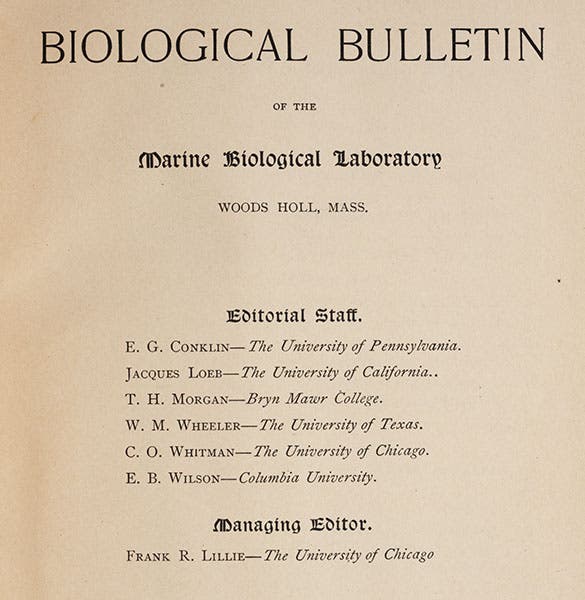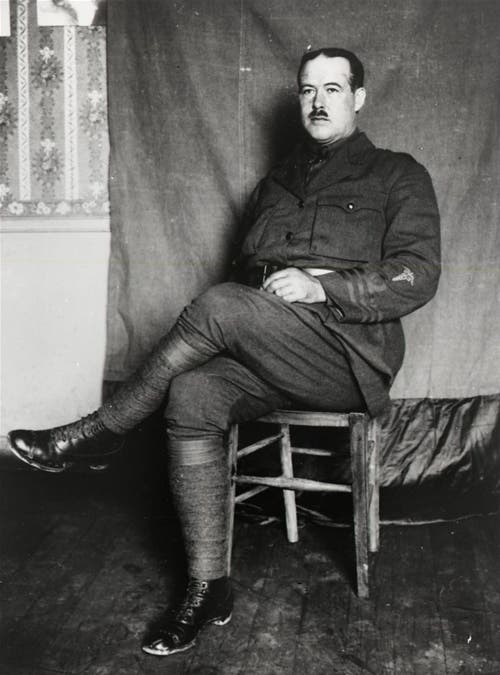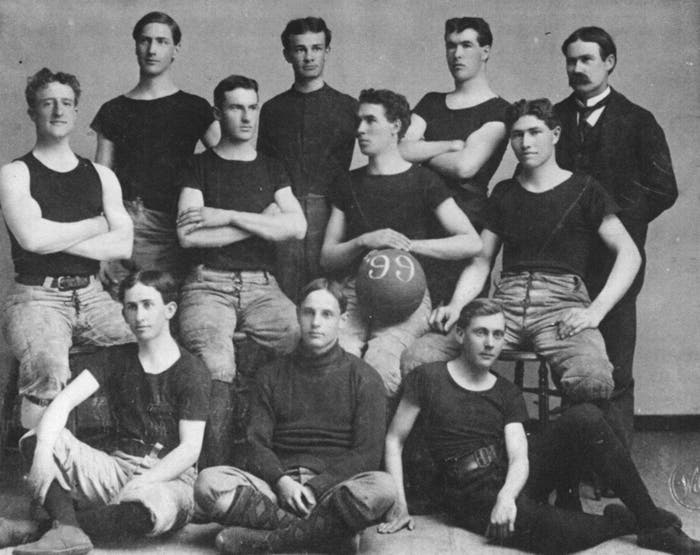Scientist of the Day - Walter Sutton
Walter Stanborough Sutton, a cytologist and surgeon, was born Apr. 5, 1877. Sutton was a Kansas farmboy who enrolled at the University of Kansas (KU) in 1896 to study engineering, and then switched the next year to biology. He joined a research group that was studying the cells of the "lubber grasshopper”, Brachystola magna, of which there was no shortage on the Great Plains. This particular species exhibits a chromosome group in which the chromosomes have marked differences in size, making them easier to track during cell division (first image). While he was mastering the peregrinations of grasshopper chromosomes, Mendel's papers on genetics were rediscovered in 1900, and Sutton set about trying to find a physical basis for Mendel's laws in the chromosomes of cells.
Sutton moved on to Columbia University, where he worked under Edmund Beecher Wilson, often considered America’s first cell biologist. Sutton discovered that the chromosomes in his grasshopper cells behaved as if they were the carrier of Mendel's genes, replicating when cells divide, and splitting up when reproductive cells were produced. He wrote and published an article late in 1902 on grasshopper chromosomes (the source of our first image), and followed it in the same journal with a more general paper in 1903, "The Chromosomes in Heredity," which is considered one of the milestone works in genetics. It marks the birth of the chromosome theory of inheritance (although Sutton shares the credit with Theodor Boveri, who made the same discovery, independently, in 1904). The masthead of the Biological Bulletin, where Sutton's paper was published, is of interest. All of the present and future giants of genetics are there, as editors, including Thomas Hunt Morgan, who would later confirm Sutton's hypotheses with his own work on fruit flies.
After some further study at Columbia, Sutton returned to set up a surgical practice in Kansas City, also becoming associate professor of surgery at the new KU School of Medicine. He spent some time in France running a surgical hospital during the early days of World War I (fourth image).
However, not long after his return from France, in 1916, Sutton suffered a ruptured appendix, and he died, only 39 years old. Ironically, Sutton was then working on techniques to improve the survival chances of those with ruptured appendices. His papers are preserved in the archives of the Clendening Library at the KU School of Medicine.
One feature of Sutton's student days at KU will interest local Jayhawk fans. Sutton was a first-team member of the varsity basketball team, which had been founded in 1898 by James Naismith, the father of basketball. There survives a photograph of the 1899 team (fifth image). The man holding the basketball is Walter's brother, Will, who was the captain. The man just behind and to the right, and looking just like Will, is Walter Sutton. Naismith stands at far right. Dr. William B. Ashworth, Jr., Consultant for the History of Science, Linda Hall Library and Associate Professor, Department of History, University of Missouri-Kansas City. Comments or corrections are welcome; please direct to ashworthw@umkc.edu.








![Using an astrolabe to measure the depth of a well, woodcut in Elucidatio fabricae vsusq[ue] astrolabii, by Johannes Stöffler, 1513 (Linda Hall Library)](https://assets-us-01.kc-usercontent.com:443/9dd25524-761a-000d-d79f-86a5086d4774/a998eb50-55d2-4a88-ace2-a50aa5fa86e7/Stoffler%201.jpg?w=210&h=210&auto=format&fit=crop)

